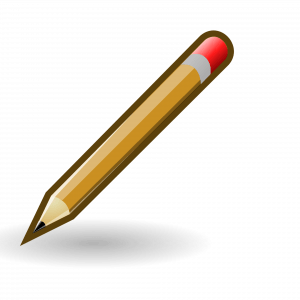Drawing and painting dinosaurs – creating prehistoric creatures – is fun and rewarding, but where and how to start? As a practising artist, I have to ‘fess up that I’m not a palaeoartist but have a lot of experience of drawing and painting animals, and often discuss with leading palaeoartists how their own practice works. These suggestions and guidelines are for those of you who are keen to start or are already experimenting with palaeoart.
What do I mean by palaeoart? For this, I am indebted to Mark Witton (of which more shortly) who describes palaeoart in three parts:
- art that is informed by scientific data
- art that reconstructs missing biological data
- art that reconstructs extinct animals, plants and environments.
You are going to attempt to visualise a creature that no longer exists, but there are some things you can do that will get you a long way to making that work. However, whichever way you look at it, there is no getting away from the reality that you have to be able to DRAW. This is the most important and useful tool you can own:
There’s no point in playing with wizzy computer hardware and software if you can’t draw.
Incidentally, for anyone toying with the idea of computer animation, the common heartfelt plea from those teaching animation at graduate and postgraduate level – and those running animation studios – is that they need animators who can draw. With a pencil.
For me, whereas painting is the act of creating a final image, drawing is a process of understanding a subject – I have sketchbooks full of half-finished, exploratory drawings, and often have to accommodate the uncomfortable truth that animals don’t pose for me and will move or wander off part of the way through a study. However, you can visit museums and draw specimens if you’re not comfortable with uncooperative subjects. Draw skeletons – understanding anatomy is crucial for making realistic studies. In my own practice I worked on two projects, one involving great apes and one involving horses, and in both cases, I was able to visit the University of Bristol’s Veterinary School, where I could examine and draw the skeletons of a gorilla and a horse, which was invaluable.
Draw your pets. Draw people. Still life. Landscapes. Anything that helps your observation and understanding of how to turn a three-dimensional object into a two-dimensional image. (The problem with just copying photographs or other images is that they have already been ‘flattened’.)
You might already paint with traditional materials – watercolour, acrylics, oils, coloured pencils – or you might go straight to digital media, which is an individual choice, but remember – you can make a bad painting from a good drawing, but you can never make a good painting from a bad drawing.
However, you’re likely to be reading this because you want to draw dinosaurs.
Now this is very important: Do not even THINK of plagiarising others’ work. EVER.
You can copy to learn, to work out how another artist has arrived at an image, to understand the process. If I want to learn about composition, I’ll copy a Rembrandt or a Leonardo to deconstruct it, but copying others’ work and claiming it for your own is the absolute cardinal sin. And you will be found out. (Incidentally, in wildlife art, even copying someone else’s photograph without permission or credit is just as unacceptable.) But what else can you do?
If you’re interested in dinosaurs, the chances are that you already try to keep up with the science news, and this can give a lot of information about the latest thinking about anatomy and surface texture. Scales, skin, feathers, colour – an element of speculation is, of course, inevitable, but it pays to try to go along with the most recent information.
Follow the professional palaeoartists – look at the work of Mark Witton, Bob Nicholls, Emily Willoughby, Julius Csotonyi, John Conway, Luis Rey, to name a few and with huge apologies to anyone I’ve missed. Try to keep up with their blogs, talks, websites and published images.
 And I really, really, really recommend Mark Witton’s book: The Palaeoartist’s Handbook, which has a section on the history and context of palaeoart, and a mass of information on reconstructing images of extinct animals. Beautifully illustrated, reasonably priced and accessible (no, Mark hasn’t paid me to say this) it will go a long way to help you.
And I really, really, really recommend Mark Witton’s book: The Palaeoartist’s Handbook, which has a section on the history and context of palaeoart, and a mass of information on reconstructing images of extinct animals. Beautifully illustrated, reasonably priced and accessible (no, Mark hasn’t paid me to say this) it will go a long way to help you.
Becoming a palaeoartist isn’t – and won’t be – easy, but bringing an extinct world to life is a challenge that brings enormous satisfaction.


